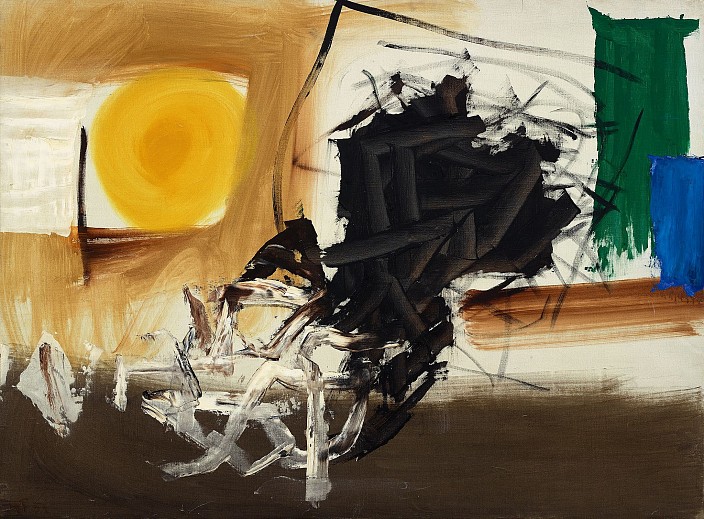
Yvonne Thomas: American Women in Florence
January 23, 2021 - John Hooper for The Wall Street Journal
Collector Christian Levett has filled his Italian palazzo with a world-class assembly of works by female Abstract Expressionists.
Spread over two floors of a palazzo beside the River Arno in Florence, amid the treasures of the Italian Renaissance, is perhaps the world’s largest private collection of art by modern female abstractionists.
Walking down the street you would never know it was there. Even if you knew the name of the collector, former hedge-fund manager Christian Levett, you would have to squint long and hard to find it in the cluster of little brass name plates alongside the palazzo’s massive door. But once across the threshold you are surrounded by paintings by Lee Krasner, Elaine de Kooning, Helen Frankenthaler, Grace Hartigan, Joan Mitchell and other Abstract Expressionists who helped revolutionize art after World War II, turning New York City into the capital of Western culture for the first time.
Mr. Levett, 50, began his career in finance in 1991 and went on to work for Goldman Sachs before founding the commodity hedge fund Clive Capital. He bought his first painting, by the 17th-century Dutch master Egbert van der Poel, in 1996. It cost 100,000 French francs, a little less than $20,000.
His interest in art burgeoned along with his ability to buy progressively more important works. He went through what he describes as “different periods of fanaticism”: coins and hand-painted books, Old Masters, antiquities, ancient arms and armor (he sits on the Metropolitan Museum’s visitors’ committee for arms and armor). Many of his antiquities are housed in the Mougins Museum of Classical Art, a four-story museum that Mr. Levett founded in 2009 in a French village near Cannes.
By the 2010s, he was noticing that when he visited corporate boardrooms, “I was more interested in the art on the wall than what they were telling me about crude oil supply in the North Sea or grain supplies from the Mid-West. At that point, it [was] time for a change.”
Mr. Levett retired in 2016 at the age of 46. By then he had begun to discover the pleasures of collecting postwar and contemporary art, which is largely free from the concerns about provenance, condition and conservation that surround earlier works.
“But I didn’t set out to buy only female artists,” he says. Along with paintings by leading women painters, Mr. Levett acquired works by David Smith, Phillip Guston, Donald Judd, Alexander Calder and others. It was after reading Mary Gabriel’s 2017 book “Ninth Street Women” that he became especially fascinated by the female Abstract Expressionists. The book is a group biography of five major artists who contended with art-world sexism and often found themselves eclipsed by their male peers, including their own husbands: Elaine de Kooning was married to Willem de Kooning, Lee Krasner to Jackson Pollock, and Helen Frankenthaler to Robert Motherwell.
“I was shocked to find Grace Hartigans and Elaine de Koonings at far more accessible prices,” Mr. Levett says. “Then on further research I noticed that a large number of previously museum-exhibited works by these two artists, plus other major female artists of the 1950s, including Yvonne Thomas and Hedda Sterne, were on the market at exactly the same time. It was then possible to simply buy them all and expand my existing holdings to create an instant museum collection in about 12 months.”
But if the apartment was on fire and he could only rescue one item, what would he choose? “Ooofff,” he sighs, throwing back his head and staring blankly at the Damien Hirst spot painting ahead of him. After a long pause, he opted for a wooden sculpture of a boy carved in the 16th century by an unknown artist. It cost Mr. Levett $35,000, a fraction of what he paid for his more expensive acquisitions. But the boy’s “soft, forlorn look” made it his most treasured possession.
Back to News
